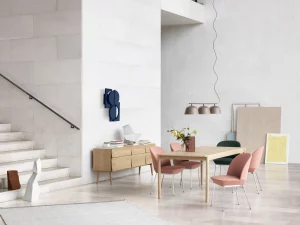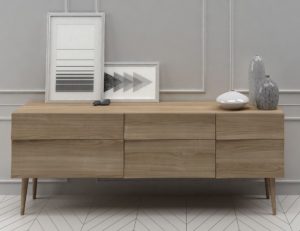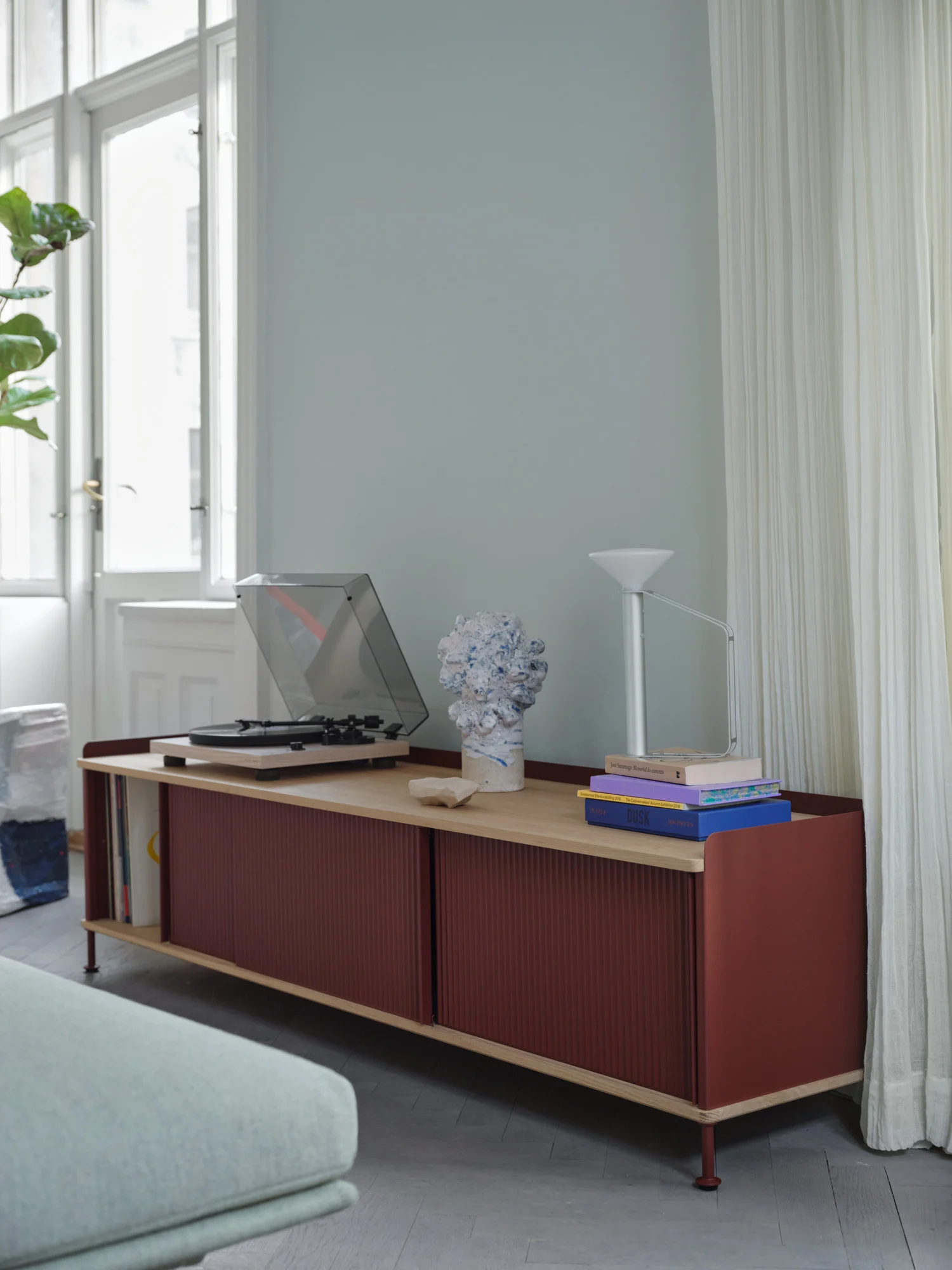
Guide to Buying a Wooden Sideboard
Discover the Elegance of Wooden Sideboards
Wooden sideboards have graced homes for centuries, offering timeless appeal and multifunctional design. Planning to buy one?
You’re on the right track. This guide aims to help you pick the ideal wood sideboard buffet or cabinet, ensuring it fits seamlessly in your space. Let’s get started.
Transitioning from their rich history, sideboards, especially the wooden ones, have seen a magnificent evolution. Today, they’re more than just storage units. They serve as aesthetic anchors, be it a mid-century sideboard or a narrow hallway sideboard. From rustic to industrial designs, there’s a sideboard for every taste and home.
Understanding the Functionality of Wooden Sideboard
In the realm of furniture, wooden sideboards stand out for their multifaceted utility. Traditionally positioned in dining rooms, these elegant pieces have found their place in various corners of modern homes. Here’s what you should know:
Storage Savvy
One of the primary reasons homeowners gravitate towards wooden sideboard cabinets is their impressive storage capability. With spacious drawers and shelves, they effortlessly house dinnerware, linens, and even beverages. For those with extensive collections, a long wooden sideboard might be the ideal pick.
Decorative Display
Beyond storage, the flat top surface of wooden sideboards offers a canvas for decor enthusiasts. Be it family photographs, ornate vases, or prized collectables, the sideboard ensures they get the attention they deserve.
Versatility in Placement
While they are a staple in dining areas, don’t limit their potential. The narrow wooden sideboard can fit into hallways, while a retro wooden sideboard can add vintage charm to living rooms. Their adaptability is commendable.
An Extension for Entertaining
Hosting a gathering? Wooden sideboards can serve as an additional counter for food and drinks. It’s an entertainer’s dream, to ensure guests have easy access to refreshments.
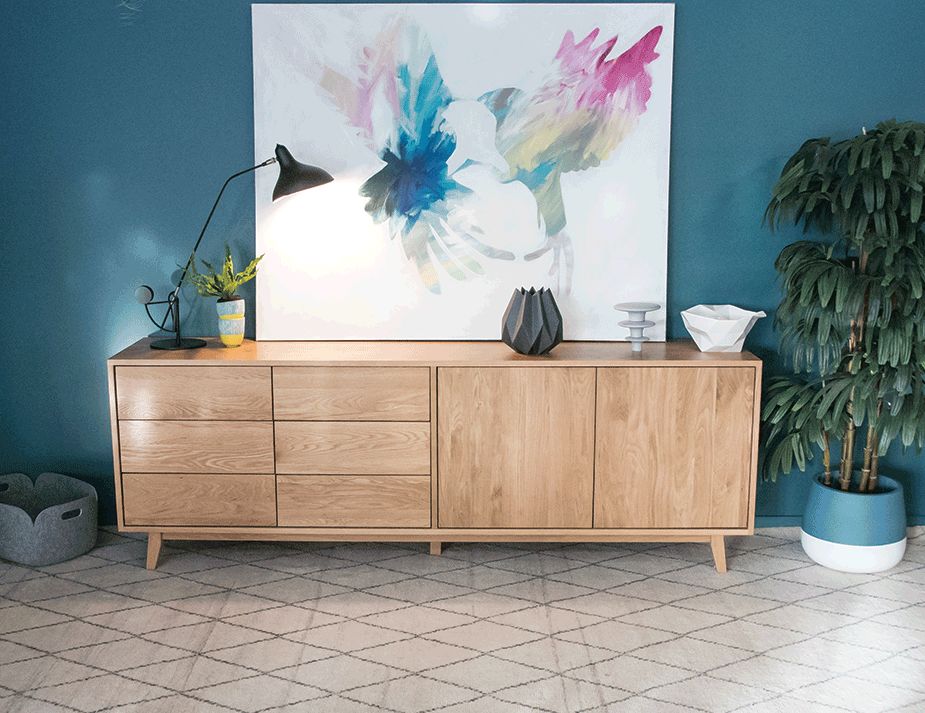
Diving Deep into Types of Wooden Sideboards
Wooden sideboards, with their aesthetic and functional versatility, have become an essential piece in many homes. By discerning the various types available, you can align your purchase with both your decor and functional preferences. Let’s journey through the major styles available:
Traditional Wooden Sideboards
With roots in historical designs, the traditional sideboard harks back to times of opulence and intricate craftsmanship. Typically showcasing detailed carvings, antique finishes, and sometimes even inlay work, these sideboards are the epitome of classic beauty. They blend seamlessly into interiors that value rich textures and timeless appeal.
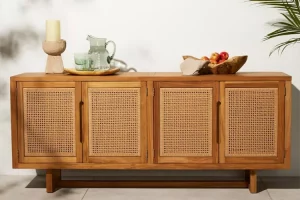
Modern Wooden Sideboards
For those who appreciate simplicity and clarity in design, the modern wooden sideboard offers sleek lines and minimalist aesthetics. Often donning neutral colours, these sideboards radiate contemporary elegance. Their clean design, devoid of frills, ensures they merge effortlessly with urban interiors and open-concept living spaces.
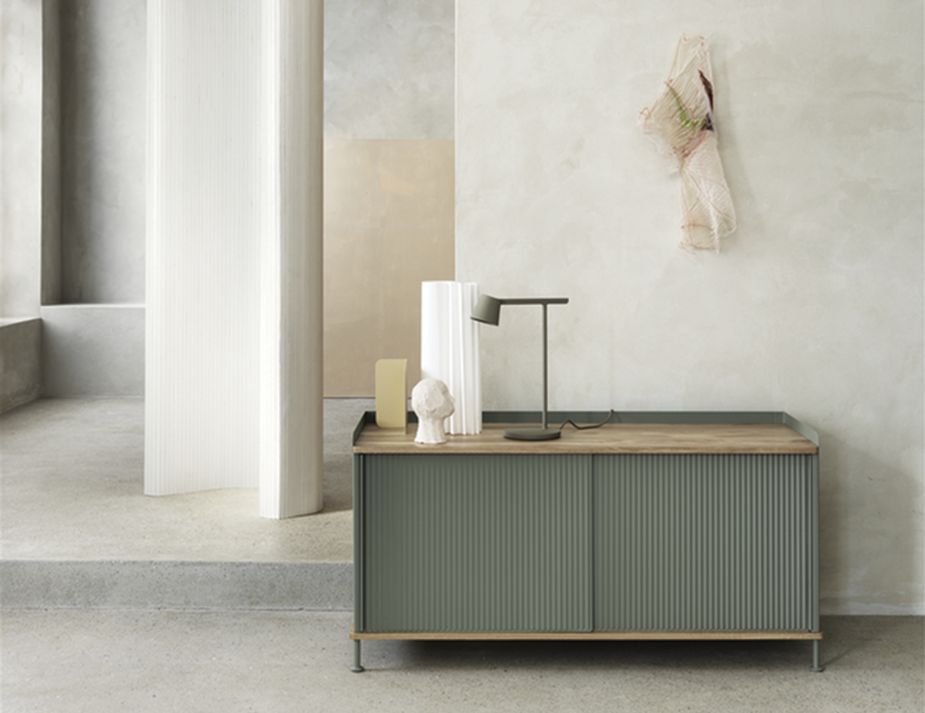
Rustic Wooden Sideboards
Capturing the warmth and charm of the countryside, rustic sideboards are for those who value authenticity. Made with rough-cut wood and natural finishes, these sideboards display a raw beauty. Knotted patterns, visible grains, and a weathered look give them a character that reminds one of cozy cabins and country settings.
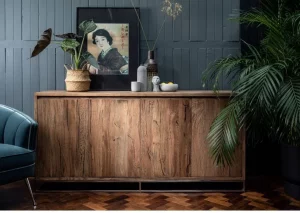
Transitional Wooden Sideboards
Bridging the gap between the past and present, transitional sideboards combine elements from both traditional and modern styles. They might feature the sleekness of modern designs adorned with subtle classic touches or vice versa. This blend ensures they’re versatile, fitting seamlessly into a wide range of interior designs while offering a unique visual appeal.
Key Factors to Consider When Buying a Wooden Sideboard
Selecting the perfect wooden sideboard involves more than just pinpointing a design that catches your eye. By diving into some critical considerations, you can ensure your choice complements your space and serves your needs effectively. Here’s a detailed guide to assist you.
Size and Dimensions
The mantra here is to think proportionally. Measure the space where you intend to place your sideboard. Consider not just its length but also its depth and height. A sideboard that’s too large can overwhelm a room, while one that’s too small might look out of place. Always remember to factor in some free space around it to avoid a cramped look.
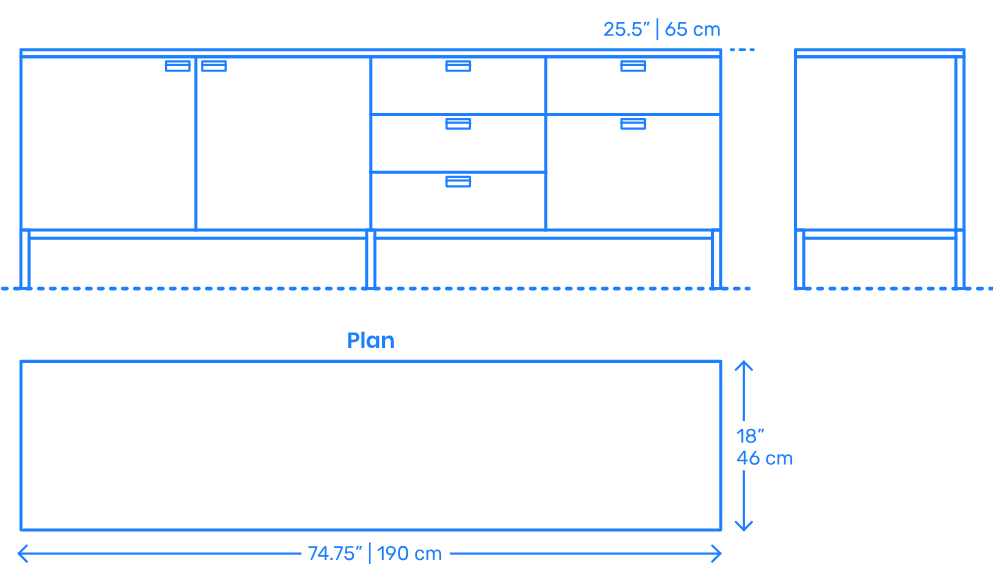
Wood Type
- Oak: A durable hardwood known for its robustness and grain patterns.
- Pine: Lighter in weight, it gives a casual look and is often more affordable.
- Teak: Renowned for its longevity and resistance to warping, it’s a premium choice.
- Walnut: Deep, rich hues make it sought-after for luxurious interiors.
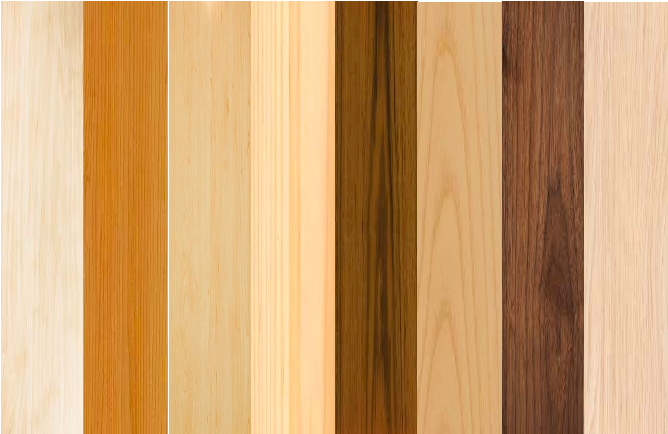
Finish
- Polished: Offers a glossy and refined look, enhancing the wood’s natural patterns.
- Matte: Subtle and understated, it gives a contemporary feel.
- Distressed: Evokes an aged, vintage look, ideal for rustic or bohemian interiors.
- Painted: Allows for colour versatility, from bold shades to pastels.
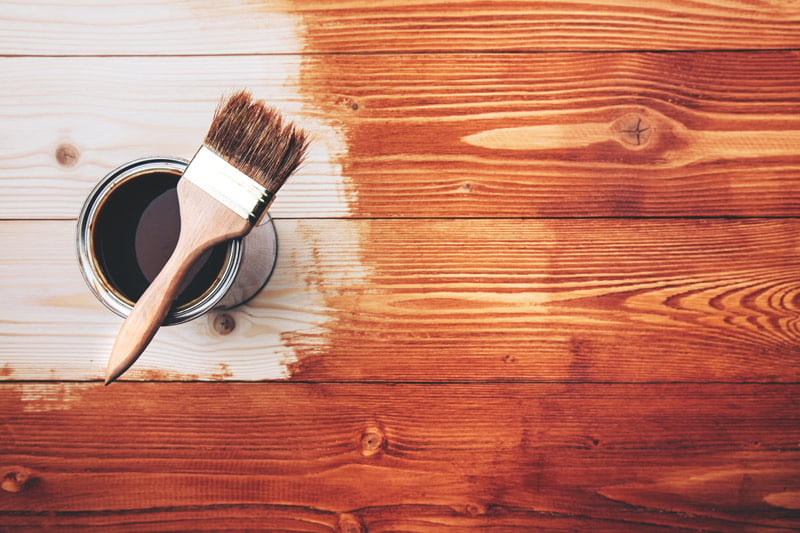
Storage Needs
Reflect on your storage requirements. Do you need multiple shelves for displaying items? Or perhaps deep drawers for table linens? Maybe a combination of both? Think about the items you plan to store and ensure the sideboard’s configuration aligns with those needs.
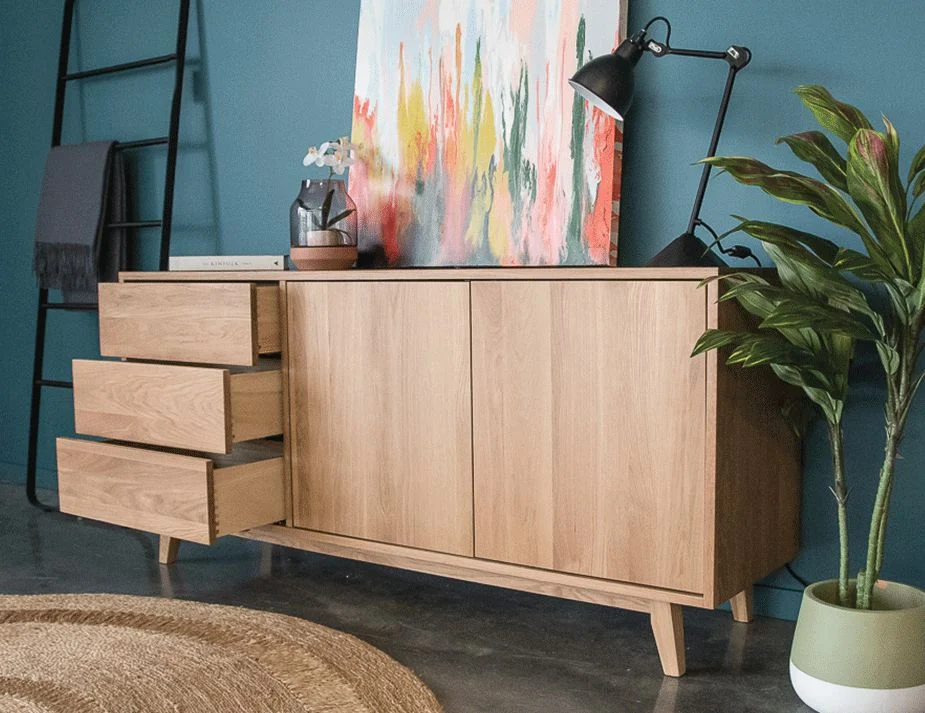
Placement and Styling Tips for Your Wooden Sideboard
A wooden sideboard, while primarily functional, can also serve as a statement piece in your home. Its positioning and how you style it can dramatically enhance its appeal. Here’s how you can master the art of placing and accessorising your sideboard.
Ideal Locations in a Room
- Dining Area: Naturally, sideboards find their home here. Positioned along a wall, they serve as storage for dinnerware and a serving counter during meals.
- Living Room: A sideboard can double as a stylish TV stand or a space to display art pieces, photographs, or plants.
- Hallway or Entryway: Greet guests with a tastefully decorated sideboard. It can hold keys, mail, or even a beautiful vase.
- Bedroom: An unconventional choice, but a sideboard can act as an extended dresser or storage for linens and blankets.
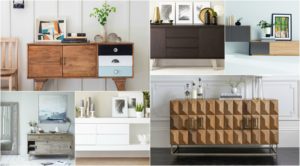
Accessorizing the Top of the Sideboard
- Mirrors: Placing a mirror above the sideboard not only adds depth to the room but also bounces off light, making the space look brighter.
- Lamps: A pair of table lamps can provide symmetry and warmth. Opt for designs that match the room’s theme.
- Plants: Greenery brings life. A potted plant or a vase with fresh flowers adds colour and vibrancy.
- Art: Whether it’s a framed print, sculpture, or ceramic piece, art can personalise your space and serve as a conversation starter.
- Books & Magazines: A neatly stacked set can add a touch of sophistication and cater to the readers in the house.
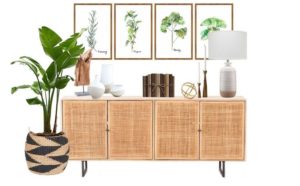
How to Clean and Maintain Your Wooden Sideboard
Your wooden sideboard is not just a functional piece; it’s an investment in style and durability. To ensure it lasts for years and continues to look its best, regular care and maintenance are crucial. Here’s how you can maintain the sheen and strength of your wooden sideboard.
Regular Dusting of Wooden Sideboard
Use a soft, lint-free cloth to wipe the surface. This prevents dust from settling and scratching the wood.
Avoid Direct Sunlight on Wooden Sideboard
Continuous exposure can fade the wood’s colour. Place the sideboard away from windows or use curtains to protect it from harsh sunlight.
Protect your Wooden Sideboard from Spills
Immediately wipe off any liquid spillage to avoid stains. Use coasters or placemats to prevent direct contact with wet or hot items.
Polish your Wooden Sideboard Periodically
A good-quality furniture polish can keep the wood gleaming. Opt for one that matches the finish of your sideboard.
Avoid Chemical Cleaners on Wooden Sideboards
Harsh chemicals can strip the wood of its natural oils. Use cleaners specifically designed for wood.
Check for Pests
Termites and other wood-eating pests can be a nightmare. Regularly inspect and consider periodic pest control measures.

Finding the Perfect Wooden Sideboard for Your Home
Buying a wooden sideboard isn’t just about acquiring another item; it’s about boosting aesthetics, optimising storage, and making an impression. Dive into the variety available from an oak sideboard to a rustic sideboard buffet consider essential aspects. Think placement, style, care, and budget. The perfect sideboard, whether a low sideboard or a tall one with drawers, should complement your decor, provide practical storage, and spark conversations. So, explore, evaluate, and select a piece that mirrors your taste and requirements. Here’s to discovering the sideboard that amplifies your home’s allure!
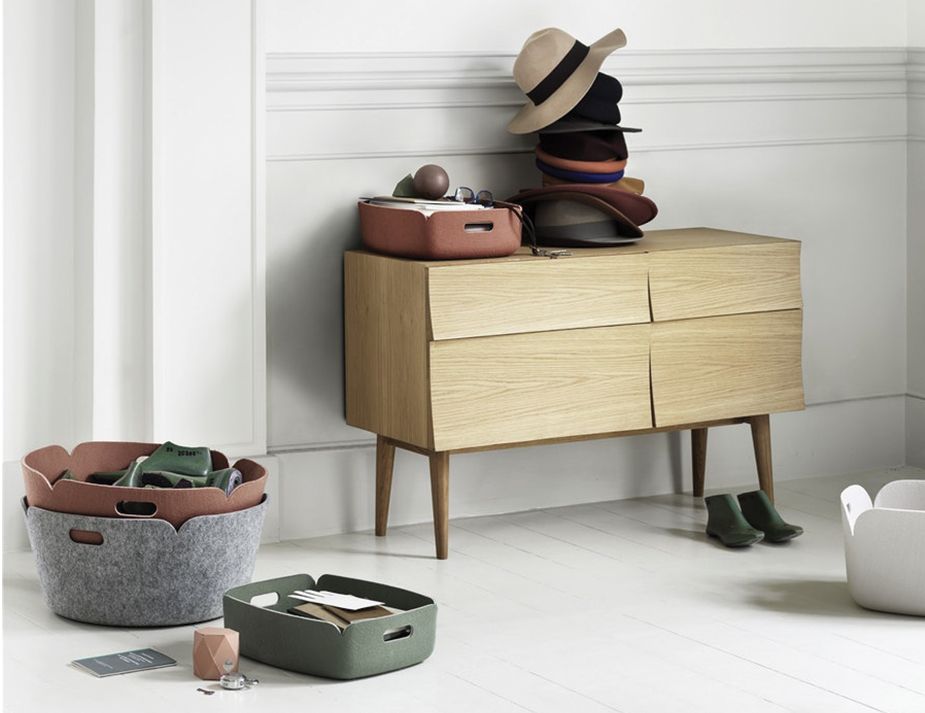
Frequently Asked Questions
Certainly! Sideboards in bedrooms can act as unconventional dressers or storage units. They’re perfect for stashing away linens, books, or even shoes. Their broad tops can also serve as display areas for personal mementos, photographs, or even a vanity setup.
Absolutely. Pairing two similar or complementary sideboards can be a fantastic solution for spacious rooms or those needing extra storage. When doing this, ensure the sideboards don’t make the space feel cramped and that there’s a sense of symmetry or balance in their placement.
Measure the space where you plan to place the sideboard. Ensure there’s ample room around it for movement and other furniture. Typically, a sideboard should not overpower the room but fit seamlessly within it.
In living spaces, sideboards become multifunctional hubs. They can house media equipment, collections of books, or family board games. With their spacious tops, they also offer areas to display decor, house plants, or even set up a mini bar for entertaining.
While both are similar, traditionally, a buffet is used in a dining room for serving food, whereas a sideboard offers storage and may be used in various rooms.

